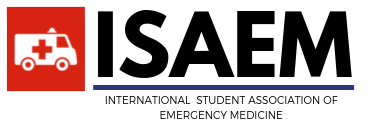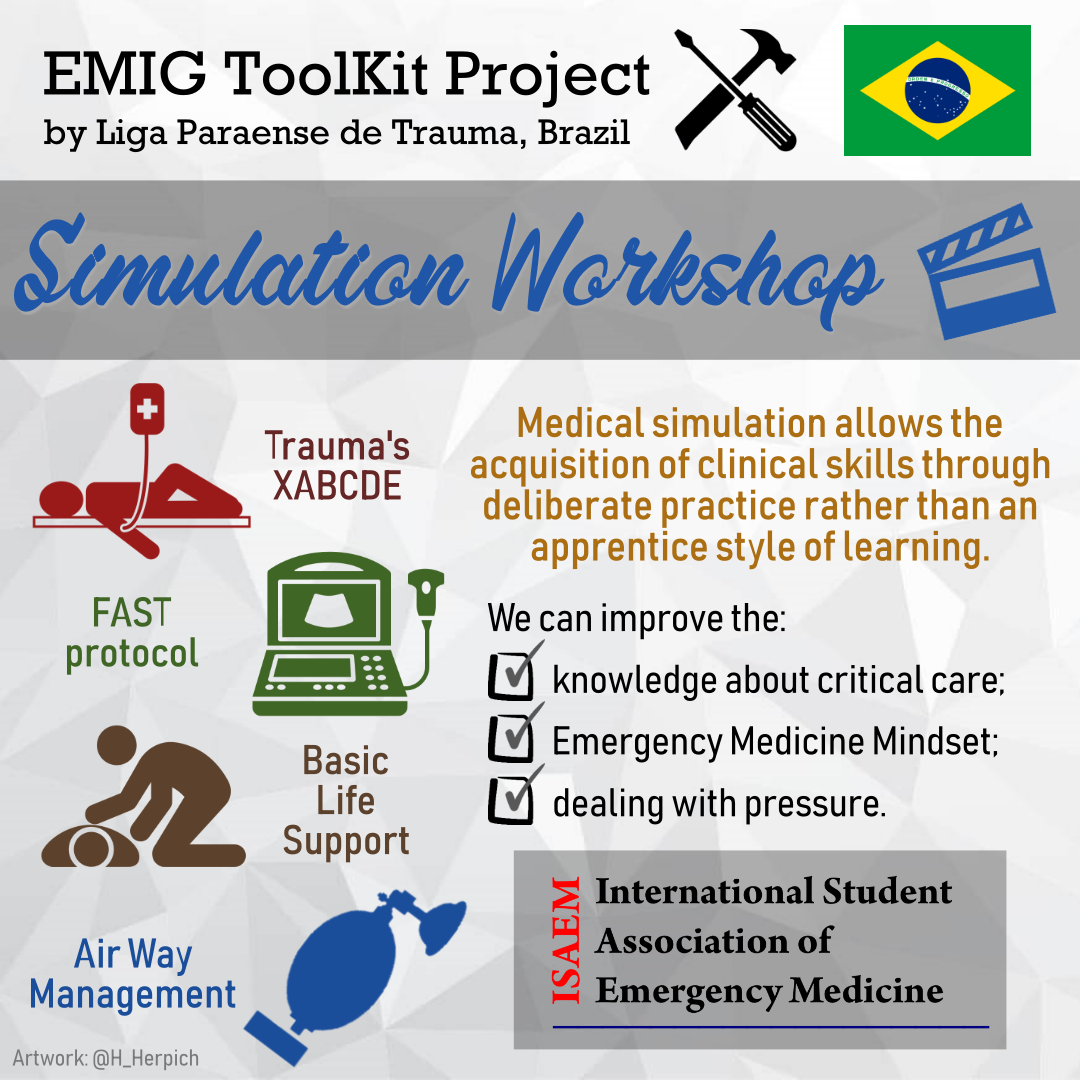How to do a Simulation Workshop?
Who shared this idea? Pedro Ferreira Editor: Henrique Herpich
Simulation is the hot topic for our second post from the “EMIG Toolkit Project”. For those who don’t know about it, the ISAEM Emergency Medicine Interest Groups (EMIGs) Toolkit Project is meant to provide you with ideas and resources on how to form and develop your own emergency medicine student groups, as well as tips and suggestions passed on other established groups.
We will be sharing ideas for EM educational activities from international student EM groups.
The second one comes from Pará, Brazil. This workshop was mentored by Dr. Nagele Lima and Dr. Luciano Gomes Moura back in 2018. We want to thank them both, as well as Pedro Ferreira, president of Liga Paraense de Trauma for sharing this with us.
What is this EM Educational Activity?
This is a Simulation Workshop created to teach student about the EM mindset and prepare them to have more confidence when facing a critically ill patient in the emergency department.
What is the main goal?
Emergency physicians need to make quick decisions and find out what the patient needs now, in 5 minutes or even in 1 hour. The main goal of the simulation is to provide training and stimulate the emergency medicine mindset in order to act in this situation.
What is the structure needed for this EM Educational Activity?
# Support staff needed: 1 resident presenter, 1 student presenter, 1 staff presenter (could be flexible).
# Resources (equipment, cost, etc.): It’s extremely flexible and you can decide what best fits into your reality. In the workshop of Liga Paraense do Trauma, they have used realistic simulation mannequins for CPR training, a portable ultrasound and moulage for the simulated patients (i.e human actors). All this equipment was borrowed from our university, so in fact, no money spent.
How many participants could participate in this EM Educational Activity?
It’s feasible with 20 or more students.
How should my group replicate this EM Educational Activity?
- Choose the focus of your simulation. It can be initial assessment (XABCDE evaluation), FAST protocol, Basic Life Support, Airway management and many other topics;
- Contact an emergency physician or EM resident to assist you in setting up the scenario and evaluating the simulation as well as leading the debriefing;
- If you choose simulated patients (i.e. human actors), make sure that you have the material for moulage (makeup, clothes, etc.);
- Make the simulation as real as possible. Talk to all the participants about the importance of everyone really feeling themselves in the scene;
- Never forget the debriefing! After the simulation is the time to discuss the mistakes and correct answers with the emergency physicians and consolidate the knowledge learned.
Shared Experience from the Liga Paraense de Trauma:
“Even though the practice were mostly on low fidelity simulation, the students enjoyed working on the scenarios, and dealing with the pressure on which case. We think that this type of sim is not only to train the management of the patients’ conditions but also the mindset of the student as a potential future EM provider.”
Check below for some extra recommendations about simulation:
Simulated Patients: more to offer than we think by Victoria Brazil
dasSMACC – Learning from sim (Part I)
dasSMACC – Learning from sim by Chris Hicks (Part II)
Are you leading an Emergency Medicine Interest Group? Also have an idea to share? We want to hear from you! Please fill out this form: EMIG Project
Cite as: Ferreira, P, Brazil, “How to do a simulation workshop,” in ISAEM Blogs: EMIG Toolkit Series, July 16, 2019, http://isaem.net/emigs-toolkit-series-simulation-workshop/


